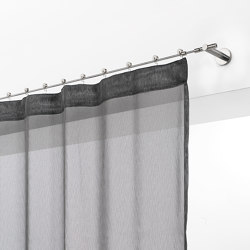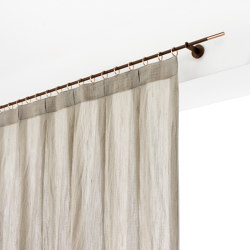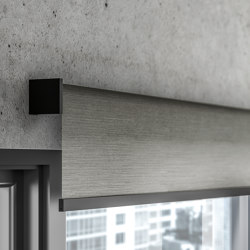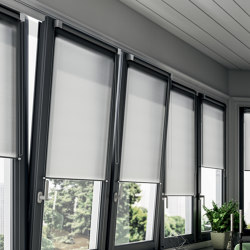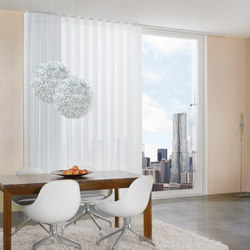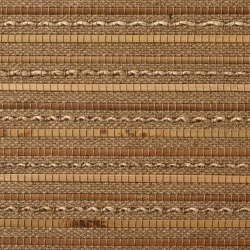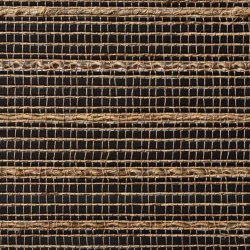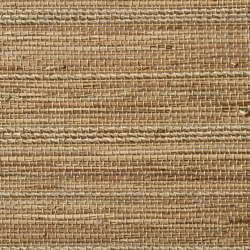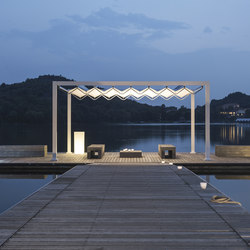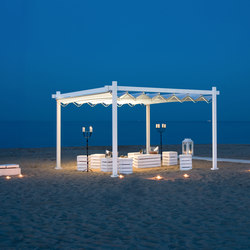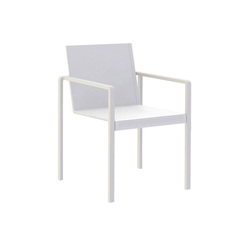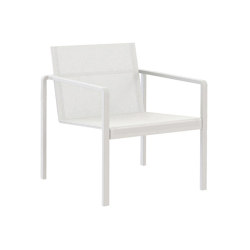About Wood & Washi
MORE ABOUT WOOD & WASHI
Wood & Washi: An attitude towards life
Wood & Washi is more than interior decoration. After all it has led to the development of new products in cooperation with renowned international artists, like the Japanese designer Kyoko Ibe and it has boosted the cultural exchanges between the Japanese and the Western European way of life. With its constantly new, innovative ideas, Wood & Washi is building on the fascinating aspects of Japanese paper which, thanks to its puristic design, focuses on the essentials of life.
From trendsetter to market leader
Company owner, Eric Fonville, founded Wood & Washi in May 1998, with the idea of finding a suitable form for traditional Japanese paper in Western European interiors. Through the production of classic Shoji dividing walls and roll-up shades with fine wooden frames, he and his team developed today's Rollo Shades, Panel Shades, Banners and Flow Shades.
Where almost everyone else had failed, Wood & Washi succeeded in linking the thousands of years of Japanese paper culture art with modern Dutch Design. In the process innovation was also combined with functionality. The basis for the remarkable window and interior decoration is traditional Japanese living culture, which focuses on room aesthetics and order. Aluminium or wooden ribs in a puristic design, or in modern chrome or stainless steel, fit harmoniously into the interior or add exciting accents.
Rollo Shades and Sliding Panels in Japanese style
Innovative design, flexibility and the highest crafted quality make Wood & Washi the market leader in high quality window and interior decoration in Japanese style.
The Wood & Washi Rollo Shades, Sliding Panels and Banners link the thousands of years of Japanese paper culture art with modern Dutch Design. The use of original Japanese paper taken from mulberry trees (Washi), paper varieties and fine fabrics creates a fascinating play of light and shade. Plain wooden or aluminium ribs direct the eye towards the essential characteristics. High-quality wall and ceiling systems made from aluminium as well as exclusive support systems made from brushed stainless steel complete the ingenious range.
All Wood & Washi Rollo Shades, Sliding Panels and Banners are handmade in the Netherlands. If desired, special forms and individual solutions for window and interior decoration are possible, either for private use or at the office and business premises.
Japanese paper - Washi
Like almost no other material, 'Washi' Japanese paper is perfect for a whole variety of uses in modern interior design. It is fascinating not just because of its elegance and strength, but also because of its semi-transparency which creates soft, calming light. If impregnated with Persimmon juice it can survive hundreds of years.
'Washi' paper was discovered in China more than 2,000 years ago. It consists exclusively of plants, including mulberry plants such as 'kozo', shrubs such as 'gampi' and 'mitsumata' and hemp as well. During processing, only the bast between the bark and the wood is used. A complex process is used to extract the pulp, or fibrous mass. This is added to the 'root glue' in a vat filled with water, allowed to thicken and then scooped into a fine-meshed sieve. The so-called 'root glue' is a Japanese invention designed to improve the links between the fibres. After the water has been squeezed out on a large press, each sheet is dried individually on boards.
To the pulp can be added fibres and threads, snippets of bark, leaves, flowers and even gold or silver leaf. Even in the early days the entire sheet would be died, metal elements were applied with the result being a watermark effect. This paper is still used today as a material for illustrations and writing in documents and for the recording of poetry. However, it is also processed into all kinds of objects, such as receptacles, fans, helmets and garments, and it is used for wall coverings and sliding walls and windows, known as 'Shoji'. The wooden latticework was covered with the white, semi-transparent paper which was still very sensitive to light and frequently had to be replaced .
For some years now this problem has been resolved using PVC laminate. The laminate fixed the 'Washi' and provided a smooth surface. That also makes it ideal for use in modern interior design, without it losing its original charm. The gentle translucency permits the fascinating play of light and shadows and bathes the room in a warm light.
Wood & Washi: An attitude towards life
Wood & Washi is more than interior decoration. After all it has led to the development of new products in cooperation with renowned international artists, like the Japanese designer Kyoko Ibe and it has boosted the cultural exchanges between the Japanese and the Western European way of life. With its constantly new, innovative ideas, Wood & Washi is building on the fascinating aspects of Japanese paper which, thanks to its puristic design, focuses on the essentials of life.
From trendsetter to market leader
Company owner, Eric Fonville, founded Wood & Washi in May 1998, with the idea of finding a suitable form for traditional Japanese paper in Western European interiors. Through the production of classic Shoji dividing walls and roll-up shades with fine wooden frames, he and his team developed today's Rollo Shades, Panel Shades, Banners and Flow Shades.
Where almost everyone else had failed, Wood & Washi succeeded in linking the thousands of years of Japanese paper culture art with modern Dutch Design. In the process innovation was also combined with functionality. The basis for the remarkable window and interior decoration is traditional Japanese living culture, which focuses on room aesthetics and order. Aluminium or wooden ribs in a puristic design, or in modern chrome or stainless steel, fit harmoniously into the interior or add exciting accents.
Rollo Shades and Sliding Panels in Japanese style
Innovative design, flexibility and the highest crafted quality make Wood & Washi the market leader in high quality window and interior decoration in Japanese style.
The Wood & Washi Rollo Shades, Sliding Panels and Banners link the thousands of years of Japanese paper culture art with modern Dutch Design. The use of original Japanese paper taken from mulberry trees (Washi), paper varieties and fine fabrics creates a fascinating play of light and shade. Plain wooden or aluminium ribs direct the eye towards the essential characteristics. High-quality wall and ceiling systems made from aluminium as well as exclusive support systems made from brushed stainless steel complete the ingenious range.
All Wood & Washi Rollo Shades, Sliding Panels and Banners are handmade in the Netherlands. If desired, special forms and individual solutions for window and interior decoration are possible, either for private use or at the office and business premises.
Japanese paper - Washi
Like almost no other material, 'Washi' Japanese paper is perfect for a whole variety of uses in modern interior design. It is fascinating not just because of its elegance and strength, but also because of its semi-transparency which creates soft, calming light. If impregnated with Persimmon juice it can survive hundreds of years.
'Washi' paper was discovered in China more than 2,000 years ago. It consists exclusively of plants, including mulberry plants such as 'kozo', shrubs such as 'gampi' and 'mitsumata' and hemp as well. During processing, only the bast between the bark and the wood is used. A complex process is used to extract the pulp, or fibrous mass. This is added to the 'root glue' in a vat filled with water, allowed to thicken and then scooped into a fine-meshed sieve. The so-called 'root glue' is a Japanese invention designed to improve the links between the fibres. After the water has been squeezed out on a large press, each sheet is dried individually on boards.
To the pulp can be added fibres and threads, snippets of bark, leaves, flowers and even gold or silver leaf. Even in the early days the entire sheet would be died, metal elements were applied with the result being a watermark effect. This paper is still used today as a material for illustrations and writing in documents and for the recording of poetry. However, it is also processed into all kinds of objects, such as receptacles, fans, helmets and garments, and it is used for wall coverings and sliding walls and windows, known as 'Shoji'. The wooden latticework was covered with the white, semi-transparent paper which was still very sensitive to light and frequently had to be replaced .
For some years now this problem has been resolved using PVC laminate. The laminate fixed the 'Washi' and provided a smooth surface. That also makes it ideal for use in modern interior design, without it losing its original charm. The gentle translucency permits the fascinating play of light and shadows and bathes the room in a warm light.
MORE ABOUT WOOD & WASHI

